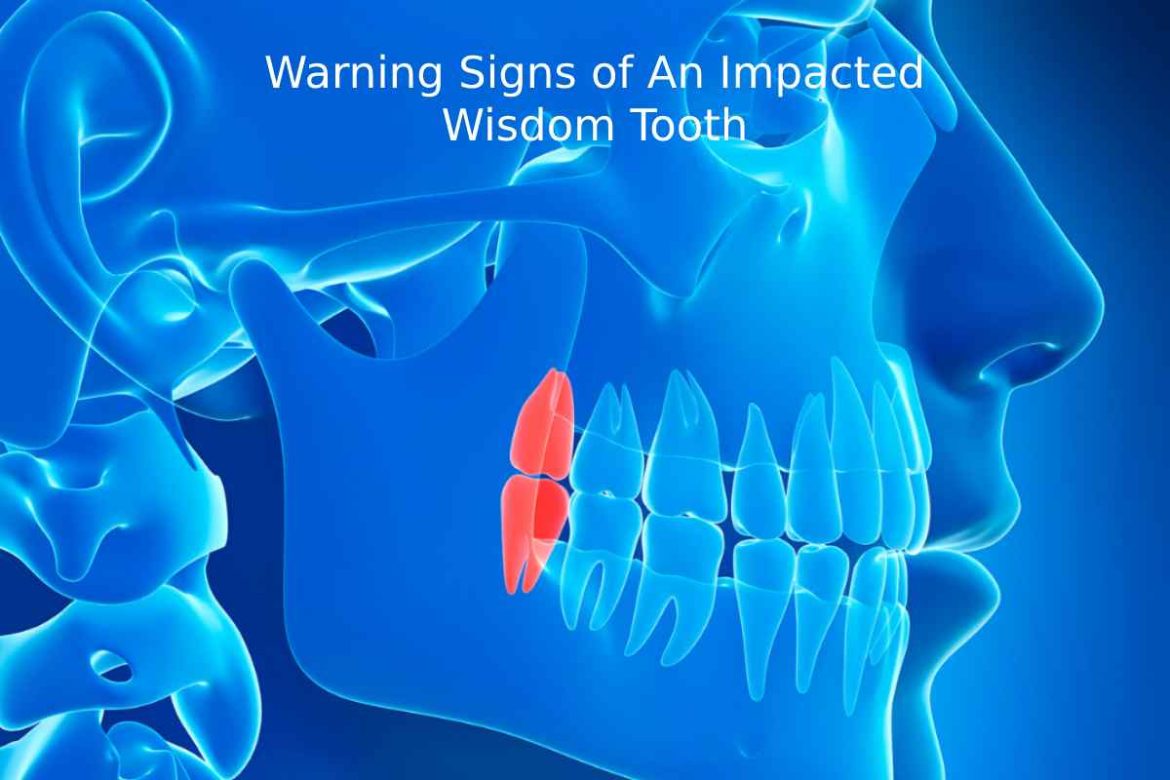Warning Signs of An Impacted Wisdom Tooth – There is still some debate on the necessity of wisdom teeth because we previously used them to crush roots and nuts. Since that is no longer needed and most of our food is softened by cooking, some people do not grow wisdom or will have them removed. Sometimes the teeth will grow at an odd angle, or there is not enough space for the teeth to come to the surface, resulting in an impacted wisdom tooth. Here are some warning signs of impacted teeth that should warrant a visit to the dentist to avoid further dental issues.
Jaw and Gum Pain
The first troubling sign of an impacted tooth is unrelenting pain near the jaw, where the tooth has either penetrated through or is still trapped inside the gum. There are times when the pain can be so severe that you can feel it in your head and face. The pain can be attributed to the lack of space for the teeth to come to the gum’s surface.
There is a higher risk of infection associated with the mere presence of a wisdom tooth. The wisdom teeth are located in the temporomandibular joint (TMJ), which sits below the sinuses, and in most cases, the pain can be interpreted as a sinus infection. It is best to deal with the tooth because it puts pressure on the nerves and may eventually lead to a swollen jaw. If the pain radiates from a specific spot at the back of your mouth, it is likely from the impacted tooth, and you should seek professional help.
Infections and Diseases
Maintaining great oral health is one of the best and easiest ways to ensure you keep away infections. Since wisdom teeth are located at the furthest part of your mouth, it is more difficult to effectively clean the area, leading to a buildup of bacteria. The bacteria will eventually cause an infection that affects the wisdom tooth and the surrounding teeth. Tooth decays are almost always imminent for people with wisdom teeth. Because food particles are easily trapped at the back of the mouth.
The inflammation of the wisdom teeth is known as pericoronitis, especially if the crown is fairly on the jaw surface. The inflammation makes chewing an uphill task, making the area swollen and painful. So how can you tell that the infected wisdom tooth has an infection, not just one of the other molars? An antibacterial mouthwash will often clear a slight infection in the molars but will not perform as well for an infection on the impacted molar.
Wisdom teeth will usually come out during late teen or early adulthood and continue to poke through the skin. Until it is fully out slowly. The teeth grow in sacs when they are underneath the gum. These sacs sometimes have small, microscopic holes that allow fluid to enter the tooth. The sacs will then incubate this fluid and eventually form cysts that erode the nerves, jawbones, and teeth. Over time, the untreated cysts may develop into benign tumours that warrant the removal of wisdom teeth. Together with the tissues and even the bone surrounding them.
Wisdom teeth are also more susceptible to fissures and cracks than molars, and these tooth surface flaws increase the chances of contracting an infection. There is also an increased rate of swelling of the lymph nodes in the neck area. Due to the pressure asserted by the impacted wisdom teeth. It is important to note that severe dental infections can leak into the bloodstream and cause various health problems such as heart attacks when left untreated for a long time.
Misalignment of Surrounding Teeth
Wisdom teeth outlived their usefulness when humans started cooking their food and developed appliances such as nut crushers and blenders. These techniques make food easier to chew, which was early man’s primary function of wisdom teeth. Therefore, naturally, our dentition has evolved and eliminated wisdom teeth’ previously occupied spaces. It is then a problem when these teeth start to grow because they will intrude into the spaces meant for molars.
The teeth do not grow at a specific angle and will normally follow a path that shows some leeway or space. During this process, the corresponding and adjacent teeth in both the lower and upper jaws will become misaligned. The misaligned teeth make you more prone to biting the inner part of your mouth and tongue, as well as a decreased chance of making a comfortable regular bite. Misaligned teeth caused by overcrowding will change the shape of your jawline and face and even lead to speech changes. In the case of overcrowding, tooth restoration may be the only solution.
Bad Breath and Taste
If you are particularly keen on your dental health and follow recommended brushing times. As well as flossing and using mouthwash, bad breath should not apply. If you then notice a foul smell or taste, especially as you eat. It could sign of an abscess oozing from your teeth. Since we use molars to chew, these should be the first suspects. If, after close inspection. There is no evidence that molars are causing the problem; it could impact the wisdom tooth. The best way to determine if halitosis results from impact wisdom teeth is by having an x-ray. An infected wisdom tooth will affect the taste of food because the decay mixed into the food as you chew. Constant bad breath and food taste changes should cause of concern. And consulting a dentist should be on your to-do list.
In most cases, impacted wisdom teeth will need to surgically removed, especially when they cause health issues. Dentists encourage the removal of wisdom teeth as a preventative measure.


